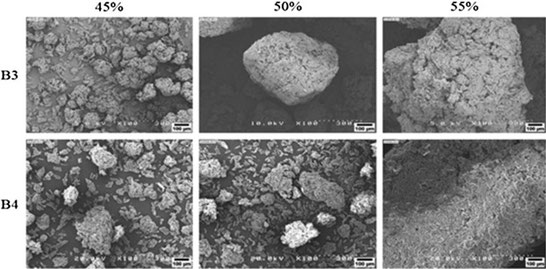Investigate the Effect of Solvents on Wet granulation of Microcrystalline Cellulose

Introduction
Since decades, granulation is operational as a critical size enlargement process for powder agglomeration in tablet manufacturing. Dry granulation , melt granulation and wet granulation are some of the most common techniques utilized for granulation in the pharmaceutical industry. However, in pharmaceutical tablet production, wet granulation is the most frequently used process consisting of agglomerating powder particles with a liquid binder, in a fluidized bed, high shear mixer or low shear mixer. All required features for compression, namely a good flow, appropriate compactibility and uniform drug distribution can be achieved using wet granulation and hence it is extensively employed granulation technique .
In wet granulation, it is imperative to determine the optimum quantity of binder solution as granule properties affect dosage form performance. The end-point in wet granulation process is a point at which a formulator achieves a target particle size, after addition of an optimum amount of granulating fluid. The rapidity with which granulation proceeds, makes endpoint determination difficult and further necessitates monitoring of the process. The potential for various methods to determine the end point of wet granulation has been reviewed extensively . In the present article, an end-point determination is carried out by one such technique, namely Thermal Effusivity, which is an emerging Process Analytical Technology (PAT) tool for optimizing wet granulation.
Tablet production is an intricate process consisting of several steps, each of which subjects the powder to a specific set of environmental conditions. It is therefore essential to have an understanding of rheological characteristics of granules, which include bulk, dynamic and shear properties. Thus, to study the rheological properties of granules, FT4 powder rheometer was used.
Diluents or bulking agents serve as the vital component of a dosage form. Microcrystalline cellulose is one such widely used diluent in pharmaceuticals due to its diverse characteristics based on different particle size. The model diluent selected for this study was MCC 105 due to its small particle size, high cohesiveness, and superior compactibility, making it an attractive candidate for size enlargement process using wet granulation. Furthermore, granulating solvent significantly affects the granule properties. Changing the solvent system leads to a change in wettability and solubility of formulation constituents, and thus influences binder distribution, which in turn affects the granule strength and porosity. In the pharmaceutical industry aqueous, hydroalcoholic, and alcoholic solvent systems are widely used. Therefore, in the present study, aqueous and hydro-alcoholic solvent systems are employed for wet granulation. Hydroxypropyl methylcellulose (HPMC) cellulose ethers are water-soluble polymers derived from cellulose, used as vital binding ingredients in the pharmaceutical processes. HPMC polymers are considered as versatile binding agents as they work well with soluble and insoluble drugs and at high and low dosage levels. Methocel ™ K4MCR and K100MCR are selected based on their utilization in wet granulation to formulate hydrophilic matrix systems, one of the widely used means for controlled drug delivery in solid oral dosage. The viscosity of the binder is another important parameter which has to be taken into account during granulation since the binder viscosity impacts the strength of the resulting granules.
The present study focuses on comparing rheological properties, thermal properties and granule strength of MCC granules by using two grades of HPMC as a liquid binder, prepared with water and hydroalcoholic solvent systems, whereby studying the effect of both, solvent and binder viscosity on granules produced by low shear granulator.
https://doi.org/10.1016/j.jsps.2018.02.007
Wet Granulation
Wet Granulation Knowledge Brief
Formulation design of granules by wet granulation to avoid tableting failures
Parametric analysis of continuous high shear wet granulation
You like these articles? More in excipient blog or weekly delivered in our Newsletter – sign up here!


